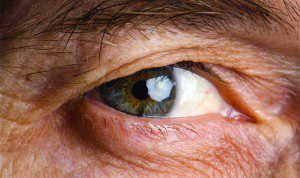

The term vision rehabilitation is replacing low vision services. The focus today is not just on low vision devices but also on training patients to use their remaining sight and other senses so they can function as independently as possible and continue to enjoy things that give them pleasure. Patients who qualify for Medicare home health, can have a certified vision specialist/ occupational therapist come into the home and do a home evaluation and train the patient on techniques and devices that helps one live as independent and safe as possible within their home. The Occupational Therapist, first interviews the patient to see how partial sight has affected their lives and what their goals are for rehabilitation. One person may want to be able to cook and read the newspaper again, while another may want to know what services are available to them to stay social and engage outside the home.
The Occupational Therapist teaches patients and their families about adaptations they can make at home, the importance of proper lighting and the benefits of contrasting colors for the purpose of improving a home’s safety and enhancing independence. Some additional tips and adjustments that can be made for safety purposes are:
1. Pour coffee into a white mug.
2. Avoid glass plates and drinking glasses because they may appear invisible.
3. Wrap colored tape around pot handles.
4. Put safety tape on edges of stairs and paint landings a color that contrasts with the stairs.
5. Set a dark colored chair against a light colored wall.
6. Give away the coffee table or drape it with a brightly colored cloth.
7. Float a bright yellow rubber duck in the bathtub to see when the tub is full.
In addition to occupational therapy, there are licensed social workers that can come to the home to help the patient arrange transportation, resources and support groups for someone newly diagnosed. Physicatric nursing services are also available to someone who needs help emotionally adjusting to living with visual impairment.
Although the loss of vision may be gradual, it can lead to significant changes in daily routine and can become overwhelming and lead to depression, loneliness and a fear of losing independence. Early intervention when it comes to therapy and knowledge is essential in maintaining the highest level of independence as possible. If you or a loved one would like more information on home health, outpatient services, or community resources please call your local Nurse On Call branch at 230-643-9940.
 Southwest Florida's Health and Wellness Magazine Health and Wellness Articles
Southwest Florida's Health and Wellness Magazine Health and Wellness Articles

